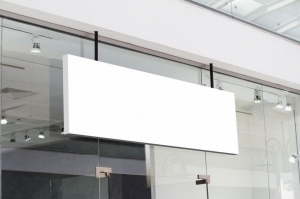please click here:
https://www.shdtimber.com/products.html
When selecting hardwood for flooring, furniture, or outdoor projects, few options rival the beauty and durability of Jatoba wood, also known as Brazilian Cherry. Renowned for its rich reddish-brown hue, exceptional hardness, and long-lasting durability, Jatoba has become a preferred choice for homeowners, designers, and craftsmen alike. Beyond its visual appeal, it offers versatility and environmental advantages when sourced responsibly.
What Is Jatoba Wood?
Jatoba, scientifically called Hymenaea courbaril, is a tropical hardwood native to Central and South America, including countries such as Brazil, Mexico, and Peru. Despite the name “Brazilian Cherry,” it is not a true cherry but belongs to the legume family. Mature Jatoba trees can grow up to 130 feet in height, producing a dense and heavy heartwood prized for its stability and beauty.
The wood's heartwood typically ranges from a light tan or salmon color to a deep reddish-brown over time, developing a warm, elegant patina that adds character to floors, furniture, and other applications. Its straight grain and fine texture also make it ideal for high-quality finishes.
Physical Characteristics of Jatoba Wood
Hardness and Density
Jatoba is considered one of the hardest commercially available woods. Its Janka hardness rating is 2,690 lbf, which is higher than most domestic hardwoods and slightly below Ipe, known as Brazilian Walnut. The wood's density makes it highly resistant to dents, scratches, and wear, perfect for high-traffic areas and long-term applications.
Durability and Resistance
Jatoba is naturally resistant to rot, fungi, and insect attacks, making it suitable for both interior and exterior use. While not completely immune to marine borers, its longevity outdoors is notable when properly maintained. This durability makes it a popular choice for decks, outdoor furniture, and other high-exposure applications.
Aesthetic Appeal
Jatoba's visual appeal is undeniable. The wood's reddish-brown hues darken over time, creating a natural patina. Its straight grain and uniform texture allow for smooth finishes and exquisite furniture designs. The color and grain patterns make it a versatile option for traditional and modern interiors alike.
Historical and Cultural Significance
Jatoba has a long history in Central and South American architecture and crafts. Indigenous peoples utilized the wood for building canoes, bridges, and tools due to its density and durability. Over centuries, it has been adopted in commercial applications worldwide, especially in flooring, furniture, and cabinetry. Its reputation as a sustainable tropical hardwood has grown, with certification programs like FSC ensuring responsible harvesting practices.
Applications of Jatoba Wood
Flooring
One of the most popular uses of Jatoba is in hardwood flooring. Its density and hardness make it perfect for areas with heavy foot traffic. It also performs well in homes with pets, as the wood is less prone to scratches and dents compared to softer woods. With professional finishing, Jatoba floors can retain their beauty for decades.
Furniture and Cabinetry
Jatoba's density and fine texture make it ideal for crafting durable, high-end furniture pieces. From dining tables to cabinets, Jatoba's ability to take stains and finishes beautifully allows artisans to create stunning designs. Its warm tones complement both contemporary minimalist and classic styles, providing versatility for designers.
Decking and Outdoor Structures
Jatoba's natural resistance to moisture and decay makes it an excellent option for outdoor decks, patios, and pergolas. Compared to softwoods, it requires less chemical treatment, contributing to a more environmentally friendly outdoor solution. Its high hardness also ensures that decking surfaces remain durable under heavy foot traffic and environmental exposure.
Specialty Applications
Beyond flooring and furniture, Jatoba is also used for cutting boards, musical instruments, and turned objects. Its fine grain and hardness make it suitable for items requiring precision and durability.
Jatoba vs. Other Popular Hardwoods
To understand why Jatoba is preferred, consider its characteristics compared to other hardwoods:
| Wood Species | Janka Hardness (lbf) | Durability | Color Characteristics | Cost Comparison |
|---|---|---|---|---|
| Jatoba (Brazilian Cherry) | 2,690 | High | Reddish-brown, darkens with age | Moderate |
| Ipe (Brazilian Walnut) | 3,684 | Very High | Olive brown to dark brown | High |
| Mahogany | 2,500 | Moderate to High | Reddish-brown to dark brown | Moderate to High |
| White Oak | 1,360 | High | Light to medium brown | Lower |
| Teak | 1,155 | Very High | Golden brown, weathers to silver-gray | High |
While Ipe is harder and slightly more durable, Jatoba provides a balance of affordability, workability, and visual appeal that makes it ideal for both professional and DIY projects.
Processing and Working With Jatoba
Jatoba's density and hardness can make it challenging to work with. Sharp blades and high-quality woodworking tools are recommended. Pre-drilling holes for screws or nails prevents splitting. Sanding requires patience but results in an exceptionally smooth finish. The wood takes stains well, enhancing its natural reddish hues or allowing for custom colors.
Environmental Considerations and Sustainability
As with all tropical hardwoods, sustainability is a concern. Responsible sourcing is key. FSC-certified Jatoba ensures that the wood is harvested legally and sustainably. Additionally, its longevity reduces the need for replacement, decreasing environmental impact over time. Using Jatoba also minimizes the use of chemical treatments required for softer woods, further promoting eco-friendly practices.
Maintenance Tips for Longevity
Proper maintenance ensures Jatoba retains its beauty and performance:
-
Indoor Flooring: Sweep or vacuum regularly. Clean with a damp mop using wood-safe cleaners. Apply a protective finish every few years.
-
Furniture: Dust frequently. Use furniture polish to enhance sheen and prevent drying.
-
Outdoor Decking: Seal with UV-protective finishes. Clean to remove debris and prevent mold growth.
-
Humidity Control: Avoid extreme changes in moisture, which can cause wood movement.
Design Inspirations
Jatoba's versatility makes it a favorite among designers. Examples include:
-
Modern Minimalist: Smooth Jatoba flooring paired with light walls creates a warm yet clean aesthetic.
-
Classic Dining Rooms: Solid Jatoba dining tables with a natural finish highlight the wood's reddish tones.
-
Outdoor Decks: Jatoba decking with stainless steel railings offers durability and a luxurious appearance.
-
Artisanal Furniture: Custom cabinets and turned objects highlight the wood's workability and fine grain.
Frequently Asked Questions
1. Is Jatoba suitable for outdoor furniture?
Yes, Jatoba's resistance to rot and insects makes it ideal for outdoor furniture. Protective finishes increase longevity.
2. How does Jatoba compare to Ipe for decking?
Ipe is harder, but Jatoba offers excellent durability at a lower cost, making it an attractive alternative.
3. Can Jatoba be used for cutting boards?
Yes, its hardness and low porosity make it perfect for durable cutting boards resistant to knife marks.
4. Does Jatoba require special tools for woodworking?
Due to its density, sharp tools, pre-drilling, and patience are recommended to prevent splitting.
5. How does Jatoba's cost compare to other hardwoods?
It is generally more affordable than Ipe and teak but slightly more expensive than domestic hardwoods like oak.
6. Can Jatoba be used in humid climates?
Yes, but controlling indoor humidity and proper finishing is essential to prevent excessive wood movement.
7. How does Jatoba's color change over time?
The wood darkens naturally, developing a rich reddish-brown patina that enhances its aesthetic appeal.
Article Summary
Jatoba, also known as Brazilian Cherry, is a durable and visually stunning tropical hardwood. With a Janka hardness of 2,690 lbf, it excels in flooring, furniture, and outdoor applications. Its reddish-brown hue deepens with age, providing a timeless aesthetic. Responsible sourcing and proper maintenance ensure Jatoba's longevity, making it an eco-friendly and elegant choice for a variety of projects.






